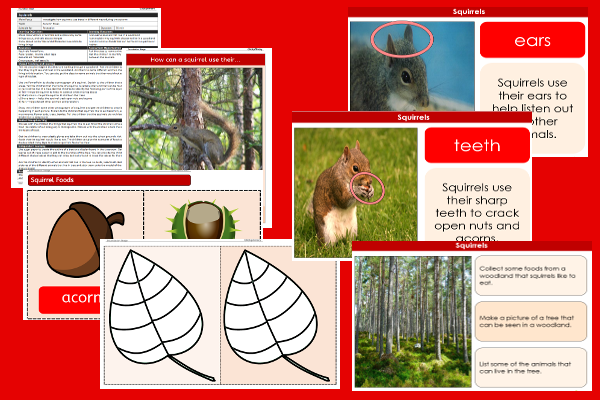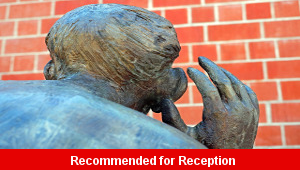Lesson Five – Squirrels

This curriculum topic teaching pack for the Foundation Stage gets the children to investigate how squirrels use trees in different ways during the autumn to collect food and provide protection from the weather.
The class can list and record some of the different foods that squirrels can search for in a woodland habitat and make models of trees where squirrels might live.
Download this teaching pack including a lesson plan, classroom activities and an interactive presentation to teach the children to investigate how squirrels use trees in different ways during the autumn to collect food and provide protection from the weather
Activities in this teaching pack include display posters to identify and describe the function of different parts of a squirrel, a set of cards to list some of the foods collected by squirrels in a woodland habitat and templates to make leaf shapes for a classroom display of a woodland habitat.
The interactive presentation gets the children to name, locate and describe different parts of a squirrel and suggest how they can use a woodland habitat to search for and collect foods.
This lesson is part of a curriculum topic scheme of work to get the children to investigate changes to different trees during the autumn and explore how this affects animals that live in a woodland habitat including owls and squirrels. There are teaching activities for shared learning, differentiated worksheets to support independent learning and interactive presentations to introduce concepts and key skills.
-

School Friends
Investigate, describe and model some of the special ways of providing practical, spiritual and emotional support to other pupils in the school
-

School Pictograms
Explore how to count and record the numbers of different pieces of school equipment that can be found in trays stored around the classroom
-

Listening Skills
Develop and refine listening skills when practising how to follow commands and instructions when playing games and role-playing actions
-

Halving Things
Explain and model how to find and record the halves of some of the different objects that can be used at home and in school
